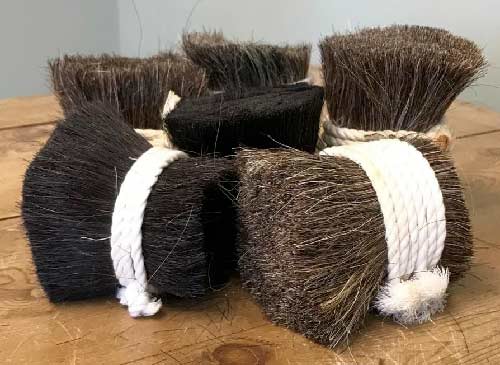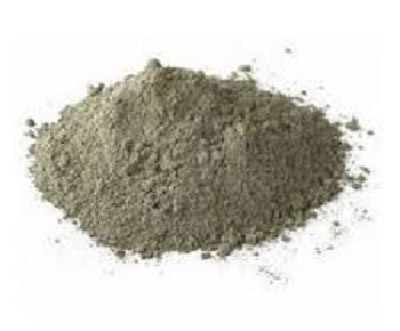Plastering and rendering are in many ways quite similar in that they are both final finishing coats, the major differences between them being that render is an external finishing coat and plaster is an internal finishing coat.
Plastering and rendering both require practice but given time its certainly a skill that anyone can master, see our projects here on how to plaster.
In a similar vein to the admixtures and additives you can get for concrete mixes to make it more workable, cure slower or faster, resist frost etc. there are additives that can be used with plasters and renders to similar effect.
Admixtures and Additives for Plaster
As plaster is an internal finish there isn’t really any need for additives such as frost proofers or those to help it become more workable, as plaster is about as workable as a material can be, however there are some additives that have been created to help overcome some of the common issues encountered with plaster.
Extratime Plaster Retarder
One of the trickiest aspects of plastering that novice plasterers struggle to get used to is the speed at which fresh plaster can go off and become unworkable, in the right conditions this can be as little as 10 or 15 minutes.
To help new plasterers develop their skills and provide more time for them to work with freshly laid plaster, Extratime plaster retarder can be added to the initial mix and once added will extend the drying or curing time of the plaster by up to an hour.
This lengthening of the curing time provides new plasterers with more time to work with the plaster on the wall, allowing them to hone and fine tune their skills to the point that they are able to work with plaster within its standard curing time.

Extratime plaster retarder can slow the speed that fresh plaster cures
Half Time Plaster Accelerator
In a similar way that newbie plasterers struggle with the speed that fresh plaster can set in warm conditions, professional plasterers quite often find that it doesn’t set fast enough and can hold them up.
Like any professional, if you do a job day in and day out you become extremely adept and can work at much greater speeds than those that aren’t used to the same task and when it comes to professional plasterers even having to wait 10-15 minutes for plaster to start curing can be too long.
With this in mind, the makers of the above Extratime plaster retarder have also formulated an additive that can cut the curing time of plaster in half helping it to go off much quicker.
For plastering professionals this allows them plaster and finish rooms much quicker and more efficiently meaning they can both cover more wall space and earn more money.

Halftime plaster accelerator for speeding up eth curing time of fresh plaster
Admixtures for Lime Plaster
Traditionally most interior plasters tended to be lime based. This was mainly due to the porous nature of the lime itself and the fact that older structures have no where near the levels of insulation or weather proofing that they do today.
Due to this older properties tend to be somewhat prone to draughts, cold spots, condensation and other moisture issues and this is where the presence of lime comes into its own.
As it is so porous, in colder conditions it can easily absorb the excess moisture that causes many of these issues and in warmer conditions it can then release it creating a very stable environment.
Another benefit of lime is that as it allows surfaces to breath this also allows the walls that it is applied to, to breath also meaning that moisture that may very well have been trapped using another covering method is allowed to escape, thus preventing it from causing other potential issues associated with older properties with solid walls.
Unlike modern plasters, traditional lime plasters were often used with additives depending on how and where it was to be used, some of these are as follows:
Stone Dust, Sand, Aggregates and Pigments
Although a core component in the production of lime plasters and mortars along with other aggregates, dust and sand can also be classed as an additive due to the fact that different types, sizes, colours and shades of sand and dust can be added to a lime plaster to alter it.
In the majority of cases additives such as these are introduced to fine tune colours or match existing lime plasters or mortars, but in some cases they are added to change or match texture and even to adjust the overall strength of the plaster or mortar.

Stone dust used to colour lime plaster and mortar
Pigments as you may know are essentially colourings or dyes that can be added to a mix to change its colour. Typically any colouring is done after a lime plaster or mortar has been spread and cured. A limewash is then applied (kind of like a paint) over the plaster or mortar to add some colour.
To create colours and tones natural earth pigments are used (natural minerals containing manganese and iron oxides) and these are mixed or combined and mixed into the limewash to create a wide range of different shades and colours from strong yellows and pinks to purples and browns.

Natural earth pigments used to colour limewash – Image courtesy of colouredearthpigments.co.uk
Animal Hair
In traditional lime plaster animal hair is often added into a plaster mix to provide additional strength to the mix as a whole once it is applied to a given surface.
In the majority of cases back in the day it was either goat or horse hair that was used due to the fact that it was pretty much readily available to most, it was often an ideal length, around the 3 inch mark and finally as both goat and horse hair is quite tough by its very nature.
One final feature that makes goat and horse hair a great choice is that, in most cases although there are always exceptions, it isn’t as oily as some other commonly occurring types of hair found at the time.

Horse hair that can be used to strengthen a lime plaster mix – Image courtesy of limestuff.co.uk
Tallow (animal fat) and Linseed Oil
Back in the day when lime plasters and mortars were the go-to choice for bonding and covering, to enhance the covering once it was cured a limewash (mentioned above) was typically used as a paint to cover the plaster or mortar.
To increse the weather-resistant properties of limewashes quite often animal fat was added into the mix. Today, instead of using animal fat linseed oil is often used to the same effect.

Linseed oil that is now used in place of animal fat to increase the weather resistance of lime plasters and mortars
Pozzolans
Pozzolans are in essence very similar to the accelerators used in cement mixes to help a cement mix set much faster than it would do if it was left naturally to cure.
In most cases they are naturally occurring clays, ashes and the similar that have been fired, although artificial variants are now available.
Once added into a lime plaster or mortar mix they then react causing the mix to cure much quicker and also stronger than it would do without it.

Pozzolan ash used to both cure and strengthen lime plasters and mortars
Admixtures for Render
Where plaster is a final coat for internal surfaces, render is the final coating used on external surfaces. The render applied to an external surface is essentially there to weatherproof the bricks, blocks or stone that form the outer skin of a property.
If left uncovered, especially in the case of solid stone properties with no cavity, water and moisture can easily soak through the outer surface of a wall and reach inner surfaces causing them to become damp leading to a whole host of issues in internal rooms including condensation, black mould and other nasty’s.
With this in mind and to ensure a given render mix is as weatherproof as it can be there are a range of additives and admixes that can be introduced to strengthen, weatherproof and also make the render more workable.
Waterproofing Admixes
As the name suggests this type of admixture is primarily added to increase the waterproofing abilities of a render mix e.g. prevent as much external water and moisture from seeping into and through the render once applied to an external surface.
Although in most cases a straight render mix will add a decent amount of protection to an external surface, it’s always a good idea to bolster its abilities as much as possible so the introduction of a water proofer is always a good idea.

Water proofing admix for use with external render
Plasticiser and Air-Entraining Admixes
Most cementous mixes such as render, concrete etc. are by their nature quite thick and heavy and when it comes to spreading and laying on thick heavy coverings this is certainly not an easy job.
Not only is it hard work, if the mix you’re trying to spread won’t actually spread easily you are almost certain to end up with an uneven covering and also the chances of leaving gaps and pockets in the covering are increased greatly.
To get around these issues and make your render much more workable it’s essential to add in a good quality plasticser as it will introduce air bubbles into the mix making it a huge amount more workable and spreadable.

External render plasticiser
Antifreeze/Frost-Proofing and Accelerator Admixes
If you have ever worked with any cement-based mix before you will probably be well aware that they do not fair well in cold conditions.
As the mix cures naturally which in most cases is quite slow (around 24-48 hours) the cold can cause the water within it to freeze before it has evaporated off. This can leave voids and cause brittleness and cracking which severally weakens and cement-based mixture.
When working in cold conditions, to reduce the risks of issues such as these occurring it’s essential that an antifreeze or frostproofer is added to the mix as this will help to reduce the risks of issues such as the above occurring.
In essence they work by rapidly speeding up the curing time of the render to minimise the effect that any cold weather has on it.

Frost-proofer and accelerator for render mixes
Rendering and plastering, whether its cement-based or lime-based, is a tricky job and takes time and practice to master but knowing what additives are available that can be introduced to a given mix to make it more workable, more resistant to the elements, stronger, set faster or even set over a longer time can be invaluable to the overall success of a job.

